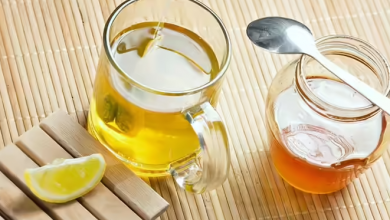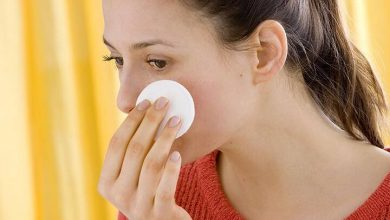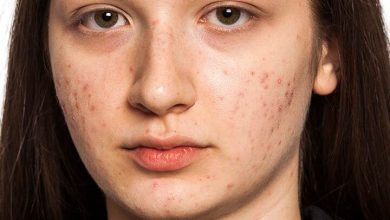Toothpaste against pimples

You wake up one morning and see a scary new pimple on your otherwise flawless face. What do you do? You may have heard of friends or coworkers who simply apply toothpaste to dry out their pimples. But can it really be that easy? Does this mean you may never have to buy another skin care product in your life?
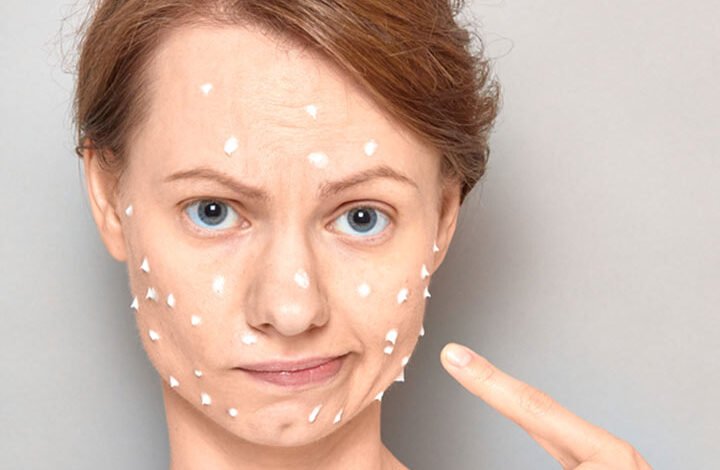
This article will explain all the facts about using toothpaste on pimples. Read on to learn more.
Although toothpaste may seem like a cheap treatment for pimples, the long-term effects can be extremely damaging. It can also cause allergies and side effects.
Toothpaste gives the illusion of healing a pimple by drying out the skin. While this may look good, it also comes with many potential risks. Toothpaste is meant to be used on the hard tooth enamel i The thin outer layer of a tooth that covers the cap or visible part above the gum line. and contains harsh chemicals, including alcohol. These chemicals can leave your skin dry and irritated.
Toothpaste may also increase the risk of cancer It contains certain ingredients that may pose a risk. We discuss these in the next section.
Ingredients for toothpaste
Some common ingredients in toothpaste include triclosan, sodium lauryl sulfate (SLS), glycerin, sorbitol i A natural ingredient that acts as a sweetener and helps maintain the texture and moisture of toothpaste. , fluoride i A chemical added to toothpaste to promote dental health by strengthening tooth enamel and increasing resistance to tooth decay. and sodium bicarbonate (or baking soda).
These ingredients have been tested and proven to be effective at keeping your teeth clean before they are added to toothpastes. However, the same cannot be said for the soft, supple skin on your face. Baking soda can throw your skin’s pH off balance, causing your face to become inflamed.
We know how toothpaste can improve oral health, so let’s see what science says about using toothpaste to treat pimples.
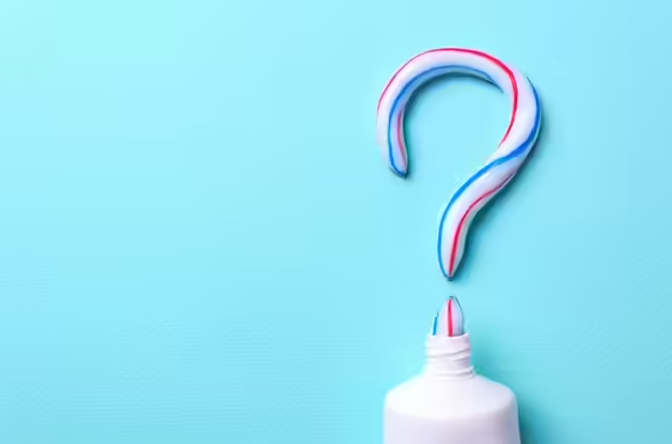
What does science say?
Toothpaste can’t kill the bacteria that cause pimples. It wasn’t meant to be used on your skin. It can actually have a damaging effect on your skin in the long run. There’s no evidence that toothpaste can help with zits. You probably won’t hear your dermatologist recommend it either.
Let’s take a look at why toothpaste may not help treat zits.
- Toothpaste may contain drying agents such as alcohol
Toothpaste may also contain alcohol. Anecdotal evidence suggests that prolonged application of alcohol to the skin can dry it out.
- Toothpaste contains triclosan
Triclosan is another ingredient in toothpaste. It is known to cause irritation and allergies when applied to the skin (3) It is commonly used as a preservative and can be harmful to the skin.
The FDA has made it illegal to use triclosan in soaps and physique washes (4). However, toothpaste is still allowed because of its properties that help fight plaque i A sticky or slippery, colorless film of bacteria that forms on teeth and can cause tooth decay and other oral diseases.
If you have dry skin due to using anti-pimple toothpaste, apply 2-3 drops of argan oil to moisturize the affected area.
It is now clear that using toothpaste to treat zits can only cause more damage. But are there any alternatives? What can you do to treat your zits?

What can you use to treat zits?
The best way to treat zits is to opt for approved zits spot treatments. Such treatments also reduce the risk of side effects such as rashes or other allergic reactions. The treatments usually use benzoyl peroxide for its bactericidal properties. You can also consult your dermatologist for more information about treatment options.
You can also use the following to treat zits.
Opt for products that are specifically designed to treat zits. These products often contain topical retinoids i A group of substances derived from vitamin A that help alleviate skin problems such as wrinkles by stimulating collagen production. They are available over the counter and can be purchased at any drugstore.
The AAD (American Academy of Dermatology) states that you should wash your face with a mild cleanser, then apply 2.5% benzoyl peroxide cream to the affected area.
You can also use sulfur-based treatments to treat zits. Even salicylic acid can be very effective for your skin as it can counteract the damaging effects of zits.
Tea tree oil is very popular for treating zits. Studies suggest that using tea tree oil on zits can also help reduce the associated inflammation (8). However, because tea tree oil is too strong, just a few drops are enough to reduce the spots. The oil also works as an effective spot treatment.
Another effective remedy may be white willow bark, which is known to have a protective effect against zits.
Anecdotal evidence suggests that products containing charcoal and clay may also help treat zits. However, consult your dermatologist before using charcoal or clay to treat zits.
As we have seen, toothpaste is not suitable for treating zits. In fact, it also carries certain risks. We will briefly discuss them in the next section.

What are the risks of using anti-zit toothpaste?
Using toothpaste on your zits can initially dry them out. This can cause your body to produce too many oils to get your skin back to normal. This can eventually lead to a bigger acne breakout.
Toothpaste may also contain other chemicals to help prevent tooth decay and kill bacteria in your mouth. These chemicals can cause adverse reactions to your skin. Over-drying your skin can also affect its softness and texture. The chemicals in toothpaste are usually strong enough to clean your tooth enamel and may not be suitable for your face.
If toothpaste is left on the skin, it can also cause contact dermatitis, symptoms of which include redness and inflammation of the skin.
Toothpaste may also contain sodium lauryl sulfate, a compound with antimicrobial activity. However, this compound can cause inflammation upon skin contact.
Be very careful about the health of your skin. The irritation after using toothpaste on pimples usually disappears after two days. If the irritation and itching persists longer, stop using this remedy immediately.
What type of toothpaste should you avoid?
While all toothpastes are generally harmful to your skin, some that contain fluoride can be worse. These toothpastes can cause pimples on your cheeks or around your mouth when they come into contact with your skin while brushing.
Some believe that fluoride toothpastes can also disrupt the pH balance of the skin. However, more research is warranted in this area.
Caroline, a blogger, has tried the anti-pimple toothpaste and shared her experience in a blog post. She says, “So if you are in a pinch and think this trick can be helpful, give it a try, but if your skin is very sensitive and delicate, opt for specially formulated spot treatments .”
Curious about the effectiveness of Colgate toothpaste for treating zits? Watch this video in which the toothpaste is tested for a week and judge the results for yourself.
When no beauty product could save us, most of us were guilty of using toothpaste for pimples and occasional breakouts. While some swear by this quick fix for breakouts, it’s best to avoid toothpaste for zits. Toothpaste can have a drying effect on the pimple and may seem like it’s working, but trust us, it’s not! Instead, toothpaste can irritate the breakout further and make the condition worse. There are better treatments and powerful ingredients (like salicylic acid) available to help you deal with your breakouts, so you can see a doctor and follow the prescribed treatment.

Alternative Toothpaste Options for Treating Zits
Using toothpaste to treat pimples is clearly a popular habit. However, it may not be suitable for everyone, as it contains ingredients such as alcohol and triclosan that can irritate the skin. Fortunately, there are a few alternatives and effective home remedies that you can follow for effective acne management. The following infographic lists a few of them. Check it out!
Frequently Asked Questions
Can toothpaste cause zits?
The chemicals and ingredients in toothpaste can irritate your skin and make the zits on your skin worse, so be careful when using it to treat zits.
Can toothpaste burn your skin?
Yes, toothpastes contain ingredients like baking soda and alcohol that can cause skin irritation, rashes and burning sensation. Do not use it as a facial cleanser.
Can I put toothpaste on a pimple on my lip?
No, avoid applying toothpaste to a pimple on your lip. Toothpastes contain ingredients like alcohol and baking soda that can cause dryness and irritation. Consult a dermatologist for pimple prevention and proper treatment.
Does baking soda toothpaste help with zits?
No, ingredients like baking soda may not be as effective as prescription medications in treating zits.
Key learning points
- Toothpaste often contains substances that dry out pimples and reduce their visibility.
- However, it can cause an allergic reaction, lead to excessive sebum production or worsen zits.
- Toothpaste containing fluoride can disrupt the pH balance of the skin and aggravate the condition.
- Therefore, it is advisable to use acne-specific products or natural remedies, such as tea tree oil, to treat pimples.
<<<Click HERE- Facial Exfoliant for Blackheads Enlarged Pores Wrinkles & Fine Lines>>>
<<<Click HERE- CeraVe Retinol Serum for Post-Acne Marks and Skin Texture>>>
<<<Click HERE- Repairing Acne Spot Treatment for Face and Body>>>






